Below is the code to write PDF using Java.
Code
public class PDFTest {
public static void main(String args[]) {
Document document = new Document(PageSize.A4, 50, 50, 50, 50);
try {
File file = new File("C://test//itext-test.pdf");
FileOutputStream fileout = new FileOutputStream(file);
PdfWriter.getInstance(document, fileout);
document.addAuthor("Me");
document.addTitle("My iText Test");
document.open();
Chunk chunk = new Chunk("iText Test");
Paragraph paragraph = new Paragraph();
String test = "și";
String test1 = "şi";
if (test.equalsIgnoreCase(test1)) {
// System.out.println("equal ignore case true");
paragraph.add(test + " New Font equal with Old Font");
} else {
// System.out.println("equal ignore case X true");
paragraph.add(test1 + " New Font Not equal with Old Font");
}
paragraph.setAlignment(Element.ALIGN_CENTER);
document.add(paragraph);
document.close();
} catch (Exception e) {
e.printStackTrace();
}
}
}
When I test with Romanian language, I found that "ș" is missing in created PDF.
The Document appears like below:

Any advice or references links regarding this issue is highly appreciated.
**EDITED**
I've use unicode example like below and the output is still same. "ș" is still missing.
Code
static String RESULT = "C://test/itext-unicode4.pdf";
static String FONT = "C://Users//PenangIT//Desktop//Arial Unicode.ttf";
public static void main(String args[])
{
try
{
Document doc = new Document();
PdfWriter.getInstance(doc, new FileOutputStream(RESULT));
doc.open();
BaseFont bf;
bf = BaseFont.createFont(FONT,BaseFont.IDENTITY_H,BaseFont.EMBEDDED);
doc.add(new Paragraph("Font : "+bf.getPostscriptFontName()+" with encoding: "+bf.getEncoding()));
doc.add(new Paragraph(" TESTING "));
doc.add(new Paragraph(" TESTING 1 și "));
doc.add(new Paragraph(" TESTING 2 şi "));
doc.add(Chunk.NEWLINE);
doc.close();
}
catch(Exception ex)
{
}
The Output looks like this

It same for encode as well. The "ș" is still missing.